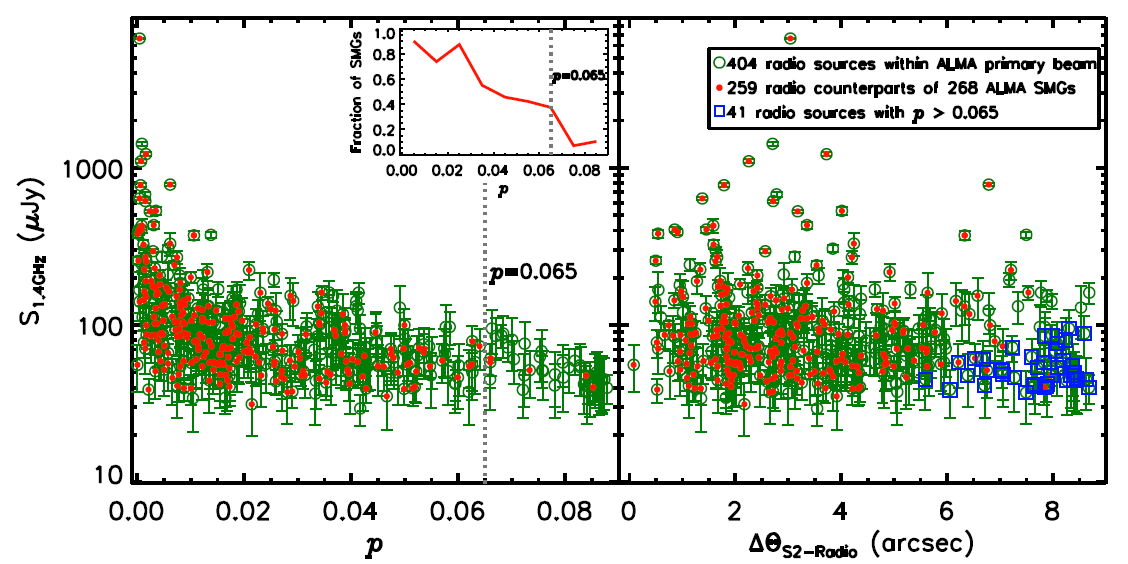Submillimeter-luminous galaxies (SMGs) are massive, dust-enshrouded systems which are forming stars at rates of 100-1,000 times faster than the Milky Way currently does. The extreme star formation rates enable them to form the stellar mass of massive galaxies within just ~100 Myr while most normal star-forming galaxies, such as the Milky way, have grown over a much more extended period (~few billions of years). Due to their potentially rapid formation, SMGs have been proposed to be the progenitors of spheroidal galaxies in the local Universe. They are also thought to be linked to quasi-stellar object (QSO) activity due the similarity of their redshift distribution to that of luminous QSOs. These characteristics mean that SMGs may be an important stage in the formation and evolution of massive galaxies and hence are a key population for us to understand the formation and evolution of galaxies in the Universe. 
By with AN Fangxia Fig. Radio flux densities for all radio sources within the primary beams of the AS2UDS ALMA maps as a function of the corrected-Poissonian probability, pvalue (left), and the offset of these radio sources from the SCUBA-2 single-dish source position (right). In total, there are 404 radio sources within the ALMA maps in the UDS (open circles). Among these, 259 radio sources are matched to 268/695 ALMA SMGs within a radius of 1 6 (filled circles), including nine ALMA SMGs that have double radio counterparts. Hence, ~63% of radio sources within the ALMA maps correspond to counterparts of ALMA SMGs. We utilize the corrected- Poissonian probability, p-value, to estimate the likelihood of a radio source being the counterpart of a single-dish-detected submillimeter source. We show the fraction of counterparts of ALMA SMGs from all 404 radio sources within the ALMA maps as a function of p-value in the inset plot of the left panel. The number of counterparts of SMGs dramatically decreases when p?>?0.065. Therefore, we choose p?.?0.065 as a cut of “robust” radio identifications in this work. There are 41 radio sources that have p?>?0.065 (blue squares). The majority of these are not associated with SMGs, so we adopt p?.?0.065 as our limit for identifying radio counterparts to SMGs. Using this p-value, the precision of radio identification for identifying counterparts of SCUBA-2-detected SMGs is ~70%.
This work by AN Fangxia has been published in The Astrophysical Journal. Please see Vol.862 No.2 for more detail:http://iopscience.iop.org/article/10.3847/1538-4357/aacdaa/meta |
